The battle line is drawn, but this is no Shuai jiao contest, neither is it your favorite Wrestlemania or Boxing bout. Instead, this a comparison of the speed of the fast charging technologies featured on the smartphones of the top five global smartphone companies. In case you've forgotten, Samsung, Apple, Huawei, OPPO and Vivo occupy the top 5 spots in terms of mobile phone shipments globally for 2016. While Samsung, Apple and Huawei had built formidable reputations for themselves over the years, OPPO rode on the back of its VOOC fast charge technology on the OPPO R9 to help shore up its sales, the result of which is still being felt today. Fellow Chinese co-traveller Vivo also has fast charging technologies which is one of its main selling points.
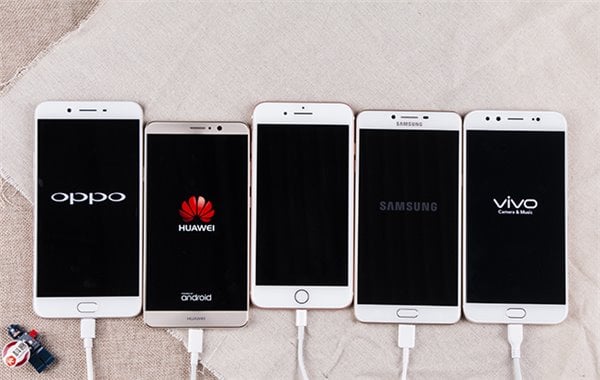
So, the fast charging feature onboard the Samsung Galaxy C9 Pro, Huawei Mate 9, OPPO R9 Plus and Vivo X9 Plus are put to test, all at the same time and the same battery level (0%) to determine which one actually charges faster. To set the records straight, the Galaxy C9 Pro, Mate 9, R9 Plus and X9 Plus, all have 4,000mAh battery capacity, while the iPhone 7 Plus comes with a 2910mAh battery. We must also point out that the iPhone 7 Plus doesn't come with fast charging support but then, it is one of the top selling and most expensive smartphones so it squares up against the others.
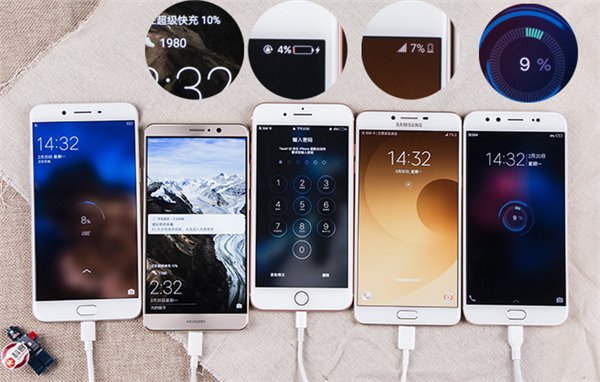
After 5 minutes of charge, OPPO R9S Plus was able to attain 8% battery capacity while the Huawei Mate 9 got 10%, the highest level of the lot. The Apple iPhone 7 Plus was just at 4%, the Samsung Galaxy C9 Pro at 7% and the Vivo X9 Plus surprisingly was at 9%.
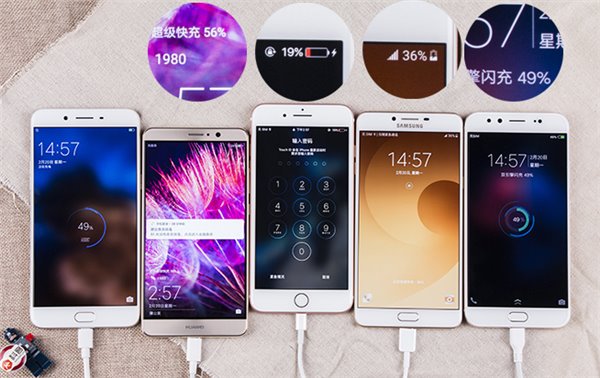
In 30 minutes, the Huawei Mate 9 with its innovative fast charging technology was well ahead at 56%, the R9 Plus and Vivo X9 Plus was trailing at 49% apiece, the Galaxy C9 Pro at 36% and finally the iPhone 7 Plus was only at 19%.
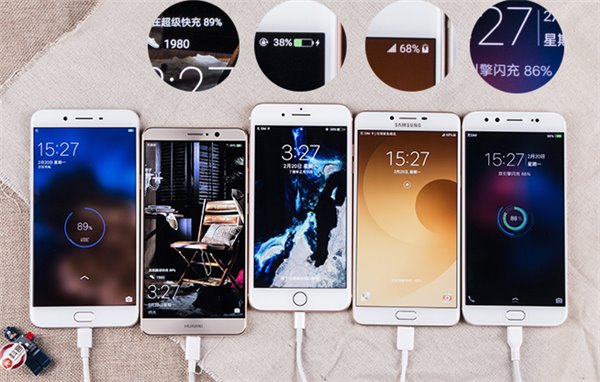
In 60 minutes, the Mate 9 and R9 Plus were both at 89% while the X9 Plus had gotten to 86%. The Samsung galaxy C9 Pro was trailing at 68% and then the iPhone 7 Plus at 38%. Obviously, Apple iPhones don't come with fast charge support and that really has no effect on sales, but it sure would have made a lot of difference to add that to their selling points.
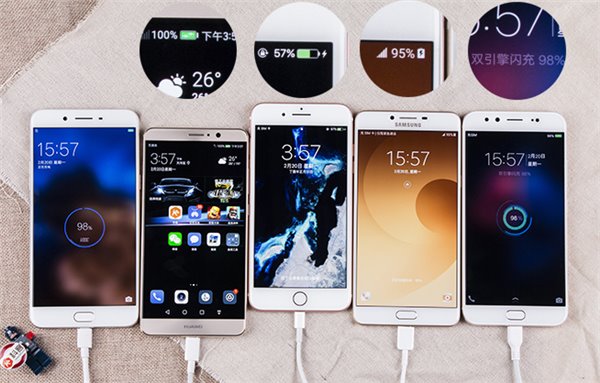
At 90 minutes, only the Huawei Mate 9 had attained full 100% charge, an applaudable feat. The OPPO R9 Plus was very close by at 98% of charge, the Vivo X9 Plus was also at 98% while the Galaxy C9 Pro was at 95%. The iPhone 7 Plus was still lagging behind at 57% even when it had a smaller battery capacity.
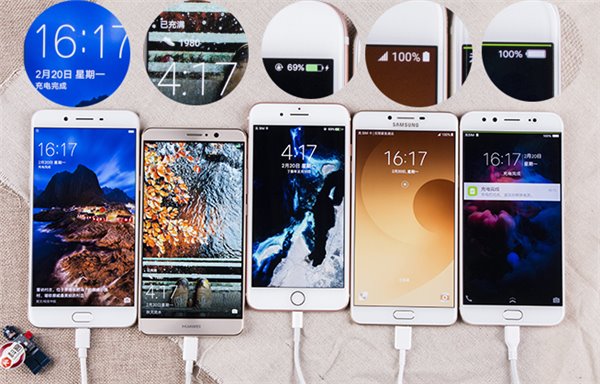
The test allowed the charge time to extend to 150 minutes and in that time, the Mate 9 and R9 Plus had stopped charging. The Vivo X9 Plus and Galaxy C9 Pro had also reached 100% in 150 minutes, while the Phone 7 Plus was only at 69%.
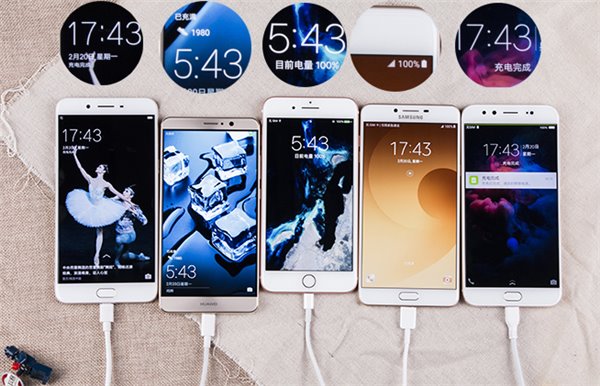
The test had to be stretched to 190 minutes, that is 3 hours and 10 minutes before the iPhone 7 Plus charged up to 100%. That is quite slow, but with an efficient Apple A10 chip onboard, the battery isn't expected to drain as fast as the others.
Related: Huawei Mate 9 Super Charge Tested: Super Fast charging Technology
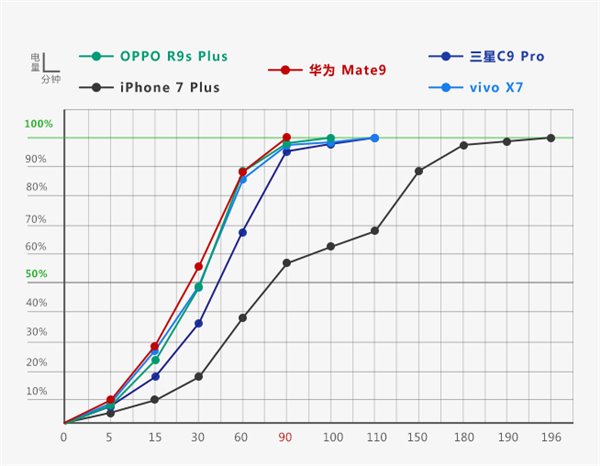
From the graph based on the fast charge test results, the Huawei Mate 9 with the steepest curve has the most efficient fast charge technology. This is followed by the OPPO R9 Plus and its VOOC fast charge technology. OPPO and Vivo are from the same parent company, so it is no surprise that the Vivo X9 Plus has almost similar charge pattern. The Galaxy C9 Pro followed closely and finally the iPhone 7 Plus came quite a distance behind the quartet.
Always be the first to know. Follow us:Source: Smartphone Fast Charging Speed Comparison: Huawei vs OPPO vs Vivo vs Samsung vs Apple
No comments:
Post a Comment